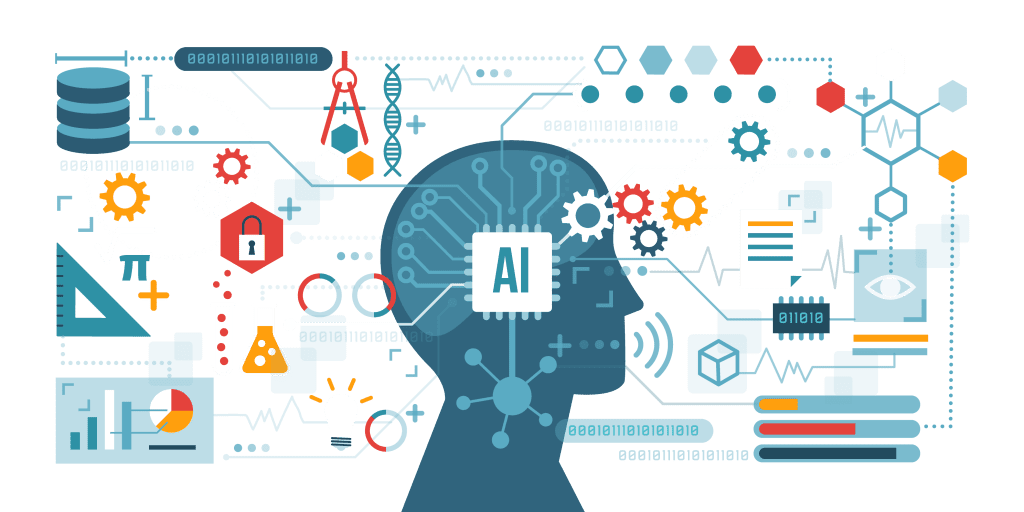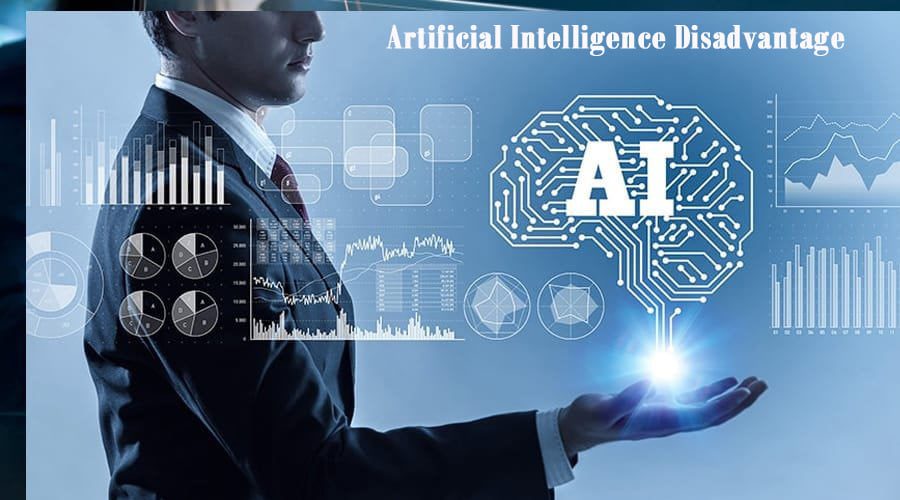Artificial Intelligence (AI) is succeeding at all the fronts of technology, from speech interpretation and recognition interfaces to self-driving cars. It is one of the top technologies with huge potential in the present and future. In broad terms, AI is the ability of a computer program to learn and think.
The opportunity for innovation, modernization, and development in AI is enormous, and it will keep changing the world in diverse ways in the future. Involvement of AI is everywhere, right from space exploration to advancements in defense systems and more. Technology is expanding progressively, and it has the potential to be more intelligent than ever.
The phrase “human error” came into existence because humans make mistakes when they learn. On the contrary, computers, if properly programmed, don’t make mistakes. When Al is used, decisions are taken from the previously gathered information, applying a certain set of algorithms.
So errors are reduced and accuracy is achieved with a greater degree of precision. AI is not restricted to only robots with human characteristics, it encompasses anything from Google’s search algorithms to IBM’s Watson to autonomous weapons.
What is Artificial Intelligence?

In a broad sense, Artificial Intelligence is a branch of computer science wherein smart machines are built in such a manner that they respond and behave like humans. The purpose of building an intelligent system, machine, or robot is to support the decision-making process, which is completely analyzed based on the data that is available to the organization.
The entire process of building an intelligent system is the same as that of humans blending the information and providing suitable decisions. The only difference is that in the case of Al, the decision-making is reached by analyzing tons of generated and gathered data. Technocrats have categorized AI into two parts – Narrow AI and General AI.
The former is designed to accomplish basic tasks or to outperform the basic human task, such as facial recognition, playing chess, solving equations, internet searches, or driving a car. The latter is meant to design cognitive, intellectual, perceptive, and rational tasks.
Many vocations involve performing repetitive work, like sending thank-you emails, verifying certain documents for errors, etc. For example, verification of documents for processing loans, etc. The feature of AI Cognitive Automation helps to speed up the process of verifying the documents.
Some of the highly advanced organizations use digital assistants to interact with users, which saves the need for human resources.
Digital assistants are also used on many websites and mobile applications to attend to users’ queries. We can chat with them about what we are looking for. Some chatbots are designed in such a way that it becomes hard to determine whether we are chatting with a chatbot or a human being.
Artificial Intelligence incorporates both Machine Learning and Data Science
Al has many inferences, depending on the specific industry it is used in. Most often, when people say AI, what they generally mean is Machine Learning. The ability of a computer to imitate human behavior is only the basic function of AI. Machine Learning and Deep Learning are the two subsets of AI.
Machine Learning enables systems to make predictions or take decisions, or learn from past data or experiences. It works on the algorithms that learn on their own using stored data. It allows computers to “witness” human behavior through the intake of data and then undergoes advanced processes to analyze that data and identify patterns within it.
It uses a gigantic quantity of organized and partly organized data so that a tool or model of Machine Learning produces a precise result or gives predictions based on that data. Whereas, Al works on all categories of data i.e., organized, partly organized, and unorganized data.
Machine Learning is the link between Data Science and Artificial Intelligence for the very reason that it is a process of learning from the data over time, while AI is the methodology that helps data science in accomplishing the goal of getting results and solutions for a specific problem.
Machine Learning is the technology that helps in achieving the set goal. Data science is not exactly a subset of Machine Learning, but it uses Machine Learning tools to analyze data and make forecasts for the future.
Data Science combines machine learning tools and methods with Big Data Analytics and Cloud Computing to enable prediction algorithms. It is purely an applied application of Machine Learning, with full attention and importance on solving real and material world problems.
Read More: Top 20 Highest Currency in the World
Benefits or Advantages of Artificial Intelligence

1. Bright and versatile career opportunities:
The amalgamation of Artificial Intelligence, Machine Learning, and Deep Learning provides a thoughtful path for individuals to make innovations. It also helps in terms of productivity and accuracy, which ultimately helps in reshaping the world. We all have heard that AI is ready to replace a lot of jobs that humans do.
Yes, it is true. Artificial Intelligence is one of the emerging technologies making its mark in every industry ranging from fashion to finance. It is creating more than 100 million roles in all the major sectors. Al has become intrinsic to key sectors like the automobile industry, smart home devices, online customer support, security surveillance, retail, healthcare, and many more.
Therefore, Al provides bright and versatile career opportunities innovating and operating Al systems, which not only give you a decent salary but also a dynamic career trajectory. Job profiles can range from Machine Learning Engineer, Software Engineer, Hardware Engineer, Research Engineer, Business Intelligence Developer, and even Data Scientist.
Big employers like Google, Amazon, and Microsoft hire AI experts. People always think that AI draws its attention only in computer or space-related industries, whereas the reality is that Artificial Intelligence has got everything in the bag to stand out from the crowd.
2. Automation and smart decision making:
AI technology has ensured a lot of progress in the field of automation and is cited as one of the most remarkable benefits of modern technology. It has had a momentous impact in the field of communications, transportation, consumer products, and service industries. Automation not only concentrates on increasing productivity but also allows more efficient use of raw materials, improved product quality, reduced lead times, and superior safety.
AI technology can coordinate data delivery, analyze trends, develop data consistency, provide forecasts, and quantify uncertainties to make the best decisions for the company.
3. Aiding medical sciences and solving complex problems:
Al has made an enormous contribution to the field of healthcare. Remote patient monitoring technology, monitoring the progression of contagious diseases, prediction of future effects and outcomes, prompt suggestions for treatments, diagnoses of certain health conditions without requiring the patient to visit the hospital are some of the key benefits of AI in the medical field.
4. Research and data analysis:
AL helps in analyzing the data more efficiently. The technology helps to create predictive models and algorithms to process data and understand the impending outcomes of different trends and scenarios. The advanced computing features of AI help in speeding up the processing and analysis of data for research and development
5. Managing repetitive tasks and ensuring continuity:
AI-powered robotic automation process helps in removing unnecessary repetition of tasks as well as performing repetitive tasks. As risk management heavily relies on data management and analysis, AI-powered tools can help organizations respond to the crisis proactively. AI technology not only helps companies to make critical decisions but also prepares them for any emergency to ensure business continuity.
Pitfalls or Disadvantages of Artificial Intelligence

There are two sides to every coin. We, as humans, need to use our wisdom to utilize the positive side of any technology for creating a better world. Many myths and theories promote the fear of the “rise of the robots.” As of this date, there is not a single application of Al which that can destroy or dominate humanity.
Ultimately, it is a human-driven resource made for the benefit of mankind Nevertheless, the concern remains as to what will happen if the human quest for AI leads to an AI system so strong that it encompasses the human brain in all reasoning, intellectual, and perceptive tasks?
In 1965, British Mathematician and Cryptologist I J Good, rightly pointed out that designing smarter Al systems in itself is a rational and thoughtful task Discovering and revolutionizing new technologies like Superintelligence help the society at large to exterminate war disease, poverty and this is the reason why Al became the biggest and most Important human innovation.
Such a system could hypothetically experience recursive self-improvement, raising an Intelligence explosion, leaving human intellect far behind, thus raising the concern whether such a system could intentionally or unintentionally cause great harm to human civilization. We can only hope that researchers will prepare a counter technology to inhibit possible negative consequences and ensure that humans continue to employ AI to their benefit while evading pitfalls.
Most of the researchers working in the AI domain think that any AI is unlikely to imitate complex human emotions like love or hate. Therefore, there is very little possibility for an AI system becoming deliberately compassionate or malicious. Scientists predict two negative scenarios that are most likely to happen if an AI system is not utilized properly
1. Devastation:
Autonomous weapons are artificial intelligence systems, and they aim to terminate objects they are programmed to kill. If it is given into the hands of the wrong persons, these weapons could easily cause mass fatalities. To ensure greater efficacy, such weapons could be designed to be extremely difficult to turn off, causing human intervention to fail. This risk is present even in narrow Al but grows as the level of Al increases.
2. High expectations, low results:
AI is generally designed for beneficial tasks, but it cannot be guaranteed that the system will completely achieve its goals or that it will not work contrary to its original objective. This can happen if we fail to fully align Al’s goals with ours. For example, if you ask an intelligent car to take you to the railway station as fast as possible, it might get you there in no time, but it may destroy the way.




